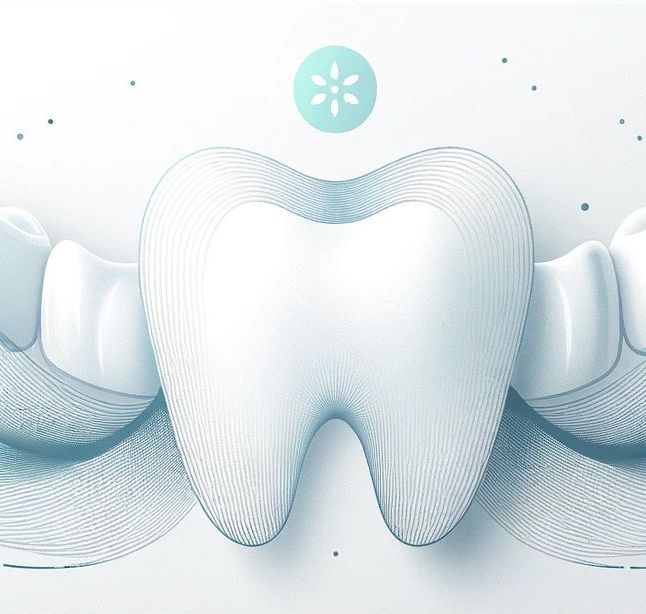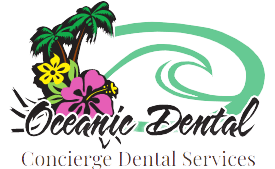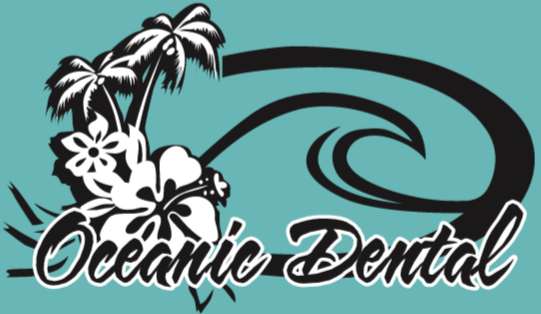-
Huntington Beach: 16052 Beach Blvd Ste. 112, Huntington Beach, CA
Emergency: (714) 600-4456
Huntington Beach: 16052 Beach Blvd Ste. 112, Huntington Beach, CA
Fountain Valley: 17991 Euclid St, Fountain Valley, CA
-
Fountain Valley: 17991 Euclid St, Fountain Valley, CA
Cosmetic Dentistry: Popular Solutions for a Beautiful Smile
Popular Solutions for a Beautiful Smile
Cosmetic dentistry is a branch of dentistry that focuses on improving the appearance of your smile. Whether you have stained, chipped, crooked, or missing teeth, cosmetic dentistry can offer you various solutions to enhance your smile and boost your confidence. In this blog post, we will explore some of the most popular cosmetic dental procedures, their benefits and drawbacks, and the latest research updates in the field.
Teeth Whitening
Teeth whitening is one of the most common and affordable cosmetic dental procedures. It involves applying a bleaching agent to your teeth to remove stains and discoloration caused by food, drinks, smoking, aging, or medications. Teeth whitening can be done at home using over-the-counter products or at a dental office using professional-grade products and equipment.
The benefits of teeth whitening are:
- It can make your teeth several shades lighter in a short time.
- It can improve your smile aesthetics and self-esteem.
- It can be customized to your desired level of brightness.
The drawbacks of teeth whitening are:
- It can cause tooth sensitivity and gum irritation for some people.
- It can damage your enamel if done too frequently or incorrectly.
- It can be ineffective for some types of stains, such as those caused by trauma or decay.
The latest research on teeth whitening suggests that:
- Using blue light in combination with hydrogen peroxide can enhance the whitening effect and reduce the side effects (1).
- Using natural ingredients such as charcoal, turmeric, or coconut oil may have some whitening effect but may also pose risks for your oral health (2).
- Using fluoride after whitening can help protect your enamel from erosion and remineralize your teeth (3).
Dental Veneers
Dental veneers are thin shells of porcelain or composite resin that are bonded to the front surface of your teeth to improve their shape, size, color, or alignment. Dental veneers can be used to correct various cosmetic issues, such as:
- Chipped or cracked teeth
- Discolored or stained teeth
- Misshapen or crooked teeth
- Gaps or uneven spaces between teeth
The benefits of dental veneers are:
- They can create a natural-looking and durable smile makeover.
- They can resist stains better than natural teeth.
- They can be customized to match your preferences and facial features.
The drawbacks of dental veneers are:
- They can be expensive and may not be covered by insurance.
- They can require some removal of your natural tooth enamel to fit properly.
- They can be irreversible and may need to be replaced after 10 to 15 years.
The latest research on dental veneers suggests that:
- Using digital technology such as CAD/CAM (computer-aided design/computer-aided manufacturing) can improve the accuracy, efficiency, and aesthetics of veneer fabrication (4).
- Using minimally invasive techniques such as prepless or no-prep veneers can preserve more of your natural tooth structure and reduce the risk of complications.
- Using biocompatible materials such as zirconia or lithium disilicate can improve the strength, durability, and biocompatibility of veneers.
Invisalign
Invisalign is a type of clear aligner therapy that uses a series of custom-made plastic trays to gradually move your teeth into their desired positions. Invisalign can be used to treat various orthodontic problems, such as:
- Crowded or spaced teeth
- Overbite or underbite
- Crossbite or open bite
The benefits of Invisalign are:
- They are virtually invisible and comfortable to wear.
- They are removable and easy to clean.
- They allow you to eat whatever you want without restrictions.
The drawbacks of Invisalign are:
- They can be costly and may not be covered by insurance.
- They require discipline and compliance to wear them for at least 22 hours a day.
- They may not be suitable for complex or severe cases that require more precise tooth movement.
The latest research on Invisalign suggests that:
- Using artificial intelligence (AI) and machine learning (ML) can improve the predictability, efficiency, and customization of Invisalign treatment.
- Using adjunctive devices such as vibration or micro-pulses can accelerate tooth movement, reduce discomfort, and improve aligner seating .
Dental Bonding
Dental bonding is a procedure that involves applying a tooth-colored resin material to your teeth to repair minor defects or improve their appearance. Dental bonding can be used to fix issues such as:
- Small chips or cracks
- Mild decay or cavities
- Discoloration or stains
- Gaps or irregularities
The benefits of dental bonding are:
- It is a simple and quick procedure that can be done in one visit.
- It is relatively inexpensive and may be covered by insurance.
- It can blend well with your natural teeth and improve your smile.
The drawbacks of dental bonding are:
- It is not as durable or stain-resistant as other materials such as porcelain or composite.
- It can wear down or break over time and may need to be replaced or repaired.
- It can only address minor cosmetic issues and may not be suitable for major restorations.
The latest research on dental bonding suggests that:
- Using nanotechnology can improve the mechanical and optical properties of resin-based materials.
- Using self-adhesive resin cements can simplify the bonding procedure and reduce the risk of postoperative sensitivity.
- Using bioactive materials can enhance the biocompatibility and remineralization potential of bonded restorations.
Teeth Reshaping
Teeth reshaping, also known as enameloplasty or odontoplasty, is a procedure that involves removing small amounts of enamel from your teeth to change their shape, length, or surface. Teeth reshaping can be used to correct issues such as:
- Pointed or uneven teeth
- Slightly crowded or overlapping teeth
- Small chips or rough edges
The benefits of teeth reshaping are:
- It is a painless and conservative procedure that does not require anesthesia or drilling.
- It is an inexpensive and fast procedure that can be done in one visit.
- It can improve your bite function and oral hygiene by eliminating plaque traps.
The drawbacks of teeth reshaping are:
- It can only make minor changes to your teeth and may not be enough to achieve your desired results.
- It can expose the dentin layer of your teeth and increase the risk of sensitivity or decay.
- It can weaken your enamel and make your teeth more prone to damage.
The latest research on teeth reshaping suggests that:
- Using digital tools such as intraoral scanners and 3D printers can improve the accuracy and efficiency of teeth reshaping.
- Using lasers instead of burs can reduce the heat generation and vibration during teeth reshaping.
- Using fluoride varnish after teeth reshaping can help protect your enamel from erosion and demineralization.
Gum Contouring
Gum contouring, also known as gingivectomy or gingivoplasty, is a procedure that involves reshaping your gums to improve their appearance or health. Gum contouring can be used to treat issues such as:
- Excessive gum tissue that covers too much of your teeth (gummy smile)
- Uneven gum line that makes your teeth look asymmetrical
- Receding gum tissue that exposes too much of your roots (gum recession)
The benefits of gum contouring are:
- It can create a more balanced and harmonious smile by adjusting the proportion of your teeth and gums.
- It can enhance your oral health by removing diseased or inflamed gum tissue.
- It can boost your confidence and self-esteem by improving your smile aesthetics.
The drawbacks of gum contouring are:
- It can be an invasive and painful procedure that requires anesthesia and sutures.
- It can be expensive and may not be covered by insurance.
- It can involve some risks such as bleeding, infection, or relapse.
The latest research on gum contouring suggests that:
- Using lasers instead of scalpels can reduce the bleeding, swelling, and healing time of gum contouring.
- Using tissue grafts or regenerative materials can restore the lost gum tissue and cover the exposed roots in cases of gum recession.
- Using digital smile design can help plan and visualize the outcome of gum contouring and improve patient satisfaction.
Dental Implants
Dental implants are artificial tooth roots that are surgically inserted into your jawbone to replace missing teeth. Dental implants can support various types of dental prosthetics, such as:
- Crowns
- Bridges
- Dentures
The benefits of dental implants are:
- They can restore your chewing function and speech ability.
- They can prevent bone loss and preserve your facial structure.
- They can last a lifetime with proper care and maintenance.
The drawbacks of dental implants are:
- They can be expensive and may not be covered by insurance.
- They can require multiple surgeries and a long healing period.
- They can involve some risks such as infection, nerve damage, or implant failure.
The latest research on dental implants suggests that:
- Using nanomaterials can improve the osseointegration and biocompatibility of dental implants.
- Using 3D printing can create customized and precise dental implants with lower costs and faster production.
- Using smart implants can monitor the health and function of dental implants and alert the dentist of any problems.
Smile Makeover
A smile makeover is a comprehensive cosmetic dentistry plan that combines two or more of the above procedures to achieve your desired smile. A smile makeover can address multiple issues at once, such as:
- Missing teeth
- Crooked teeth
- Gummy smile
- Discolored teeth
- Chipped teeth
The benefits of a smile makeover are:
- It can transform your smile and enhance your overall appearance.
- It can improve your oral health and prevent future dental problems.
- It can boost your confidence and happiness.
The drawbacks of a smile makeover are:
- It can be complex and time-consuming, requiring multiple visits and procedures.
- It can be costly and may not be covered by insurance.
- It can require some lifestyle changes and adjustments to maintain your new smile.
The latest research on smile makeover suggests that:
- Using digital dentistry tools such as intraoral scanners, CBCT scanners, CAD/CAM software, and 3D printers can improve the planning, execution, and outcome of smile makeover.
- Using minimally invasive techniques such as microabrasion, enameloplasty, or composite veneers can preserve more of your natural tooth structure and reduce the risk of complications.
- Using esthetic principles such as golden proportion, symmetry, harmony, and balance can create a more natural and pleasing smile.
Conclusion
Cosmetic dentistry is a field that offers various solutions for improving your smile. Whether you want to whiten your teeth, straighten your teeth, reshape your gums, replace your teeth, or makeover your smile, there is a cosmetic dental procedure that can help you achieve your goals. However, before you decide to undergo any cosmetic dental procedure, you should consult with your dentist or periodontist to discuss your options, expectations, costs, risks, and benefits. Remember that cosmetic dentistry is not only about enhancing your appearance but also about improving your oral health and quality of life.
References
1: https://www.ncbi.nlm.nih.gov/pmc/articles/PMC4270274/
2: https://www.ncbi.nlm.nih.gov/pmc/articles/PMC6940345/
3: https://www.ncbi.nlm.nih.gov/pmc/articles/PMC5571460/
4: https://www.ncbi.nlm.nih.gov/pmc/articles/PMC6333447/
5: https://www.ncbi.nlm.nih.gov/pmc/articles/PMC7095019/
https://www.ncbi.nlm.nih.gov/pmc/articles/PMC6320247/
https://www.ncbi.nlm.nih.gov/pmc/articles/PMC4606575/
https://www.ncbi.nlm.nih.gov/pmc/articles/PMC7019002/
https://www.ncbi.nlm.nih.gov/pmc/articles/PMC7019002/
https://www.ncbi.nlm.nih.gov/pmc/articles/PMC6333447/


About Us
With so many dental offices to choose from in Orange County, it’s difficult to find the one that’s ideal for you. At Oceanic Dental, compassion and expertise come together to provide concierge-level dental care that will help you achieve the smile you love.
24/7 Emergency Phone
Areas We Serve
Office Hours
-
Monday - Friday: 8AM - 5PM
-
Saturday: 8AM - 3PM
Locations
Huntington Beach
-
16052 Beach Blvd Ste 112 Huntington Beach, CA 92647
-
(714) 841–0203
Fountain Valley
-
17991 Euclid St Fountain Valley, CA 92708
-
(714) 378-0085
Oceanic Dental. All Rights Reserved.



